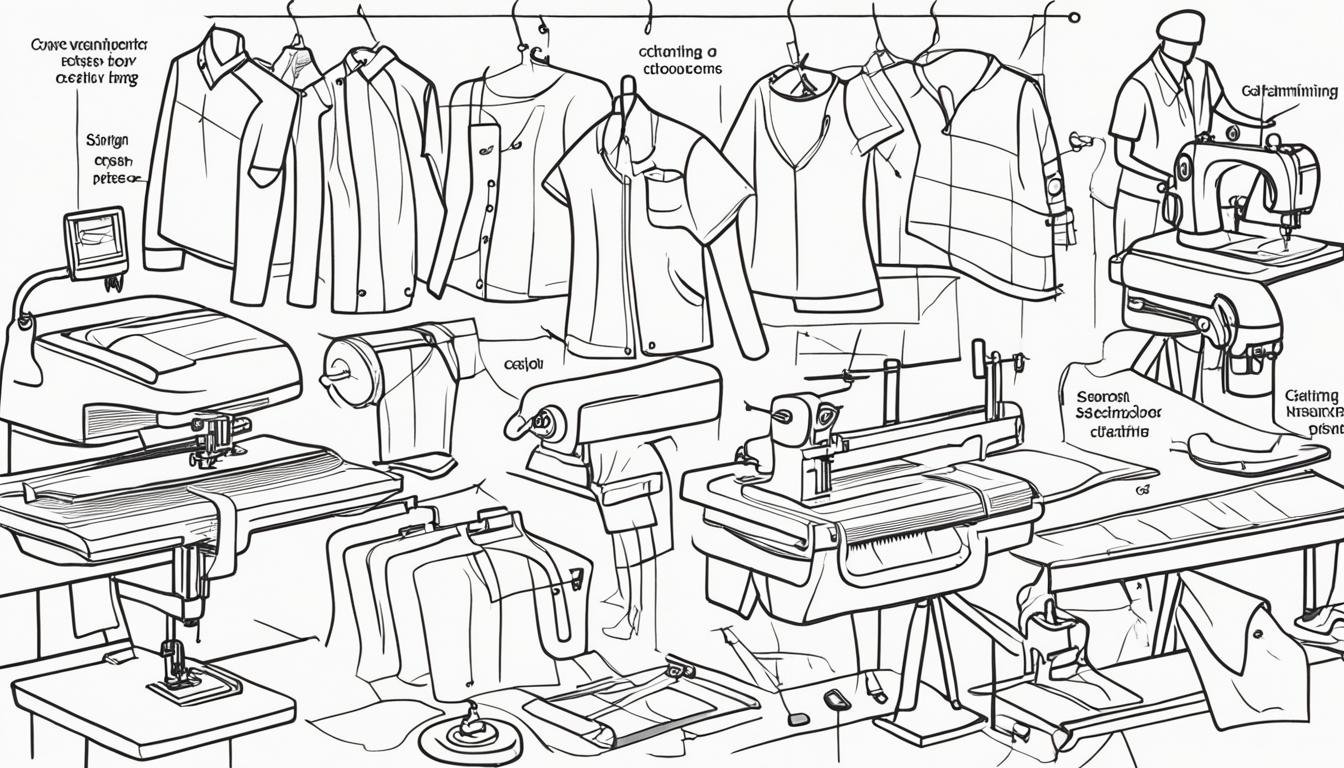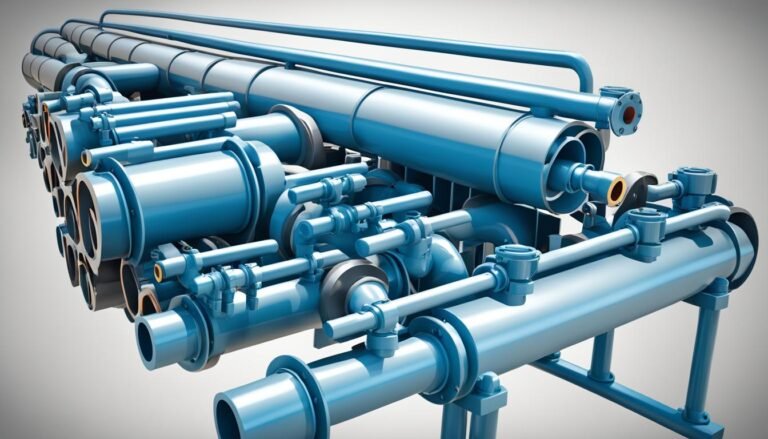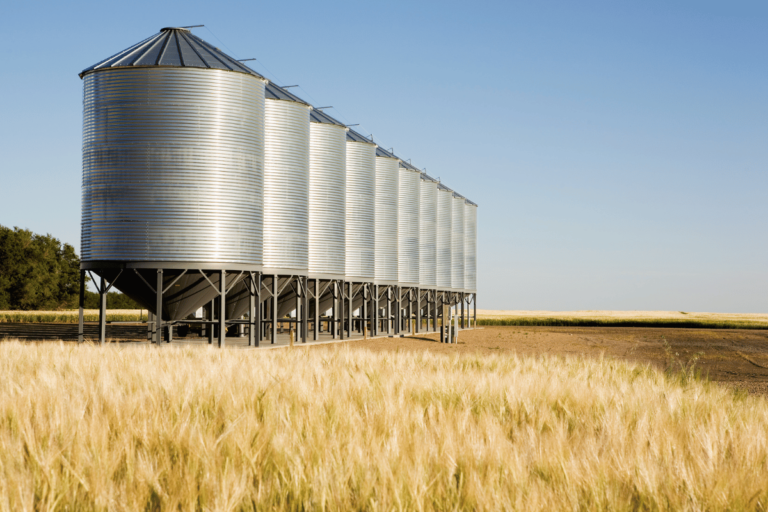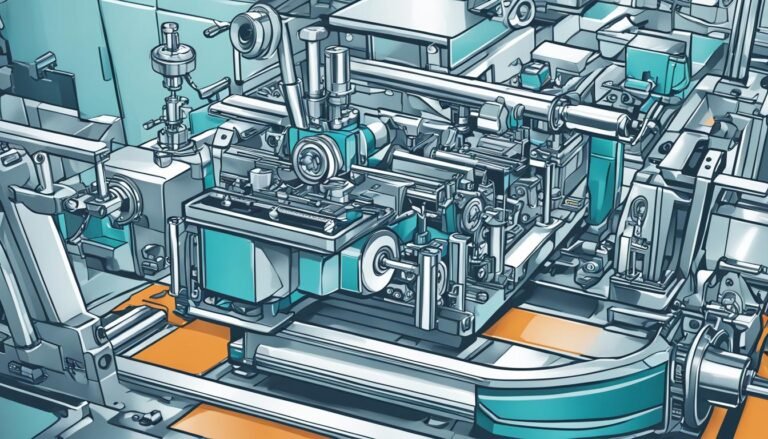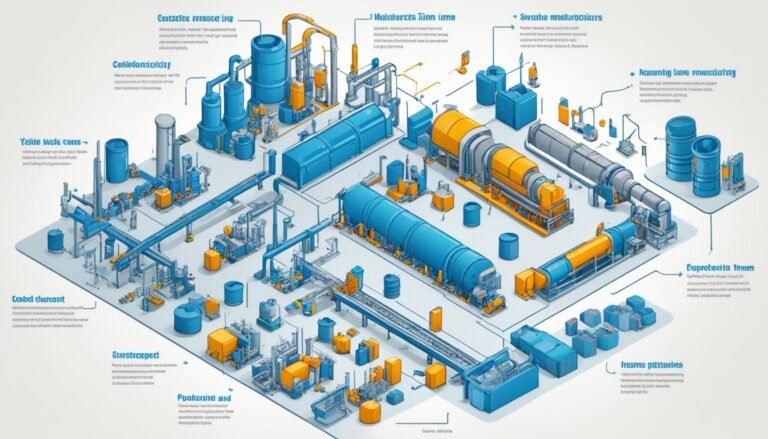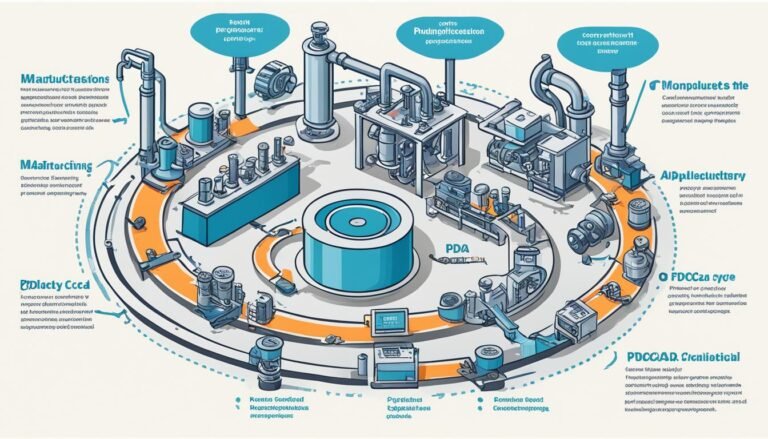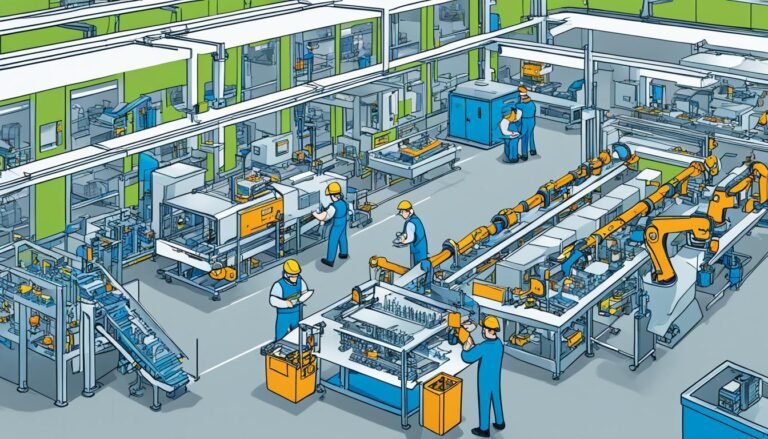Clothing Manufacturing: From Design to Production
Did you know the global apparel market hit $1.5 trillion in 2020? This shows how big and complex the industry is. It touches economies and cultures all over the world. From the first sketch to the last stitch, making clothes is a detailed process.
The garment industry mixes design, skill, and technology to turn raw materials into clothes. Every step, from cutting to finishing, is important. It shows the hard work and skill needed to make our clothes.
Key Takeaways
- The global apparel manufacturing market was valued at $1.5 trillion in 2020.
- Clothing manufacturing includes stages such as cutting, sewing, and finishing.
- Skilled craftsmanship and advanced technologies drive the garment industry.
- Understanding the clothing assembly process reveals the effort behind garment creation.
- Each stage in clothing manufacturing is crucial to producing high-quality apparel.
Understanding the Clothing Manufacturing Process
The journey from design to finished garment is complex and detailed. Each step is vital for quality and efficiency. It starts with pre-production and ends with quality control, making sure every step is important for making fashionable clothes.
Pre-Production
Pre-production is key to making clothes efficiently. It includes testing fabrics, making patterns, and creating samples. Designers and manufacturers work together to pick the best materials and methods. This careful planning sets the stage for a smooth production process.
Production Planning
Production planning is crucial for making clothes. It looks at the whole timeline and workflow. Good planning balances timelines, resources, and capacity to meet deadlines without losing quality. It needs sharp focus to avoid delays and keep the process flowing smoothly.
Cutting and Preparation
The cutting and preparation stage turns raw fabrics into pieces ready for assembly. Modern techniques like laser cutting make this step efficient and reduce waste. Each fabric piece is cut and prepared carefully, setting the stage for the next steps.
Manufacturing and Quality Control
The final stages bring the garment to life. Quality control is key to making sure each item meets standards before it’s sold. Inspections at different stages ensure the quality and consistency of the final product.
These phases work together to make sure every step, from fabric to finished garment, is done with care. The use of advanced technology and careful planning highlights the need for quality and efficiency at every stage.
The Role of Designers in Clothing Manufacturing
Designers play a key role in fashion manufacturing. They turn creative ideas into wearable art. They start with clothing design sketches, which become the blueprints for garments. These sketches then turn into detailed Tech Packs, which list all the specs needed for making the clothes.
Design Sketches and Tech Packs
Clothing design sketches are the first step in bringing a designer’s vision to life. They lead to a detailed Tech Pack. This pack includes measurements, fabric types, colors, and how to sew it all together. A good Tech Pack makes sure the designer’s idea is made just right, avoiding mistakes.
Collaborating with Manufacturers
Working together with manufacturers is crucial for making fashion. It’s important to talk clearly and set clear goals from the start. This teamwork makes the process smoother during product creation. By combining creativity with what’s possible, designers and manufacturers can make clothes that look great and work well.
Manufacturing of Clothing: A Step-by-Step Guide
Making clothes is a detailed process that needs careful planning and precise steps. Let’s look at the key stages to understand how clothes are made, from start to finish.
Sourcing Raw Materials
Finding the right materials is the first step in making clothes. It means picking fabrics, trims, and accessories that are top-notch. These choices greatly impact the look and quality of the garment.
Sample Creation and Approval
Creating samples is a vital part of making clothes. It means making early versions of the design. This process helps check if the design is right and allows for changes. Once approved, these samples guide the mass production.
Quality Assurance and Quality Control
Quality checks are key in the clothing industry. Quality assurance sets the standards for the garments. Quality control checks the items at different stages to make sure they meet these standards. This helps fix any problems early, ensuring top-quality products.
| Stage | Key Activities |
|---|---|
| Sourcing Raw Materials | Selecting fabrics, trims, and accessories based on quality and functionality. |
| Sample Creation and Approval | Creating prototypes, refining designs, and securing approvals for mass production. |
| Quality Assurance and Quality Control | Setting standards, inspecting, and testing garments to ensure compliance. |
These steps make sure the final clothes meet the brand’s high standards. This makes the products appealing to customers.
The Logistics of Apparel Manufacturing
Efficient clothing manufacturing logistics link resources, labor, and schedules smoothly. It’s key to keep costs down and production efficient. Managing the textile production supply chain and planning production timelines is crucial.
Good logistics management means watching over sewn product manufacturing closely. This includes:
- Executing time and action calendars
- Following local and international shipping rules
- Planning to keep workflows smooth from start to finish
This table shows the key parts of successful apparel manufacturing:
| Logistics Component | Description | Impact on Production |
|---|---|---|
| Material Sourcing | Finding high-quality fabrics and raw materials | Directly affects production quality and time |
| Labor Management | Coordinating skilled workers and their schedules | Boosts efficiency and cuts downtime |
| Production Scheduling | Setting a timeline for each manufacturing step | Helps meet deadlines and deliver on time |
| Shipping and Compliance | Following shipping rules and delivering on time | Lessens delays and meets standards |
Putting together clothing manufacturing logistics, a strong textile production supply chain, and efficient sewn product manufacturing operations is key. It’s the core of a winning apparel manufacturing plan.
Conclusion
The journey of clothing from design to production is both fascinating and complex. It starts with designers’ sketches and tech packs. Then, manufacturers plan and execute with strategy. This shows how important fashion manufacturing insights are.
Each step requires careful thought, from getting materials to cutting and checking quality. This makes the process detailed and thorough.
Designers and manufacturers work together to make clothes. This teamwork ensures quality and stays true to the brand. They use a guide that includes making samples and checking quality. This way, fashion brands meet what customers want.
The end result of making clothes mixes old and new, creativity with precision. By understanding each step, the fashion industry grows and changes. The hard work and innovation of all involved make the industry successful and growing.

